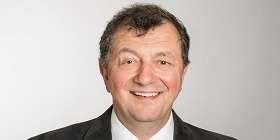Clipper Systems, Distortion Cancelling, and Too Many Bands! | Telos Alliance
By The Telos Alliance Team on May 31, 2017 2:26:16 PM
 Clipper Systems, Distortion Cancelling, and Too Many Bands!
Clipper Systems, Distortion Cancelling, and Too Many Bands!
Present-day audio clipping systems all employ methods to control distortion. Of interest is that each of these use a static method to mask harmonic distortion when clipping is active. Intermodulation (IMD), due to added presence and high frequency spectra, has overtaken the problem that once was dominated by harmonic distortion. Suffice it to say, all clipping methods must employ some form of harmonic distortion control, or they will not operate sufficiently enough to generate competitive sounding on-air audio. Modern content now requires additional processing means to reduce induced IMD.
Suppressing IMD is significantly more difficult, as the constant difference in frequency across components is a non-stop moving target, whereas suppressing harmonic distortion can easily be predicted, and controlled through a static filtering system.
Proof of this is demonstrated with an evaluation of present-day distortion cancelling systems. All of them employ static filtering to mask distortion components. They vary in range from broadband to 5-6 band, or more, and all of these fail, with aggressive processing. The broadband method suppresses harmonics, and some IMD at specific frequencies. The multiband methods are designed to insert gentle low pass filters after multiband clippers in each audio band. This works, over a narrow range, but falls apart with aggressive levels of clipping. Mutiband clipper/filtering is done in parallel architecture, and each singular band clipper is not able to understand what the others are doing. Therefore, the resulting filtered harmonics of each band interact in unpredictable ways, some of which exaggerate IMD. Adding more bands or steeper filters does not improve or fix the problem!
The Answer Is…
…Not in the number of bands! Anyone who thinks adding more bands of limiting, clipping, and filtering to the system is wasting DSP cycles, computer MIPS, and generating a lot of marketing rhetoric! The answer lies in understanding the range of frequencies that generate both harmonic and intermodulation distortion, then applying various masking means to suppress both simultaneously, as they are created. Much easier said than done! It’s a combination of breaking down the audio spectrum by octaves and interaction with the Gibbs Phenomenon. Adding SENSUS technology enables a clipping system that suppresses BOTH harmonic and IMD distortion components, when aggressive processing levels are required. Additionally, and more importantly, this new clipping method does not employ the use of dynamic compressors or limiters to control depth of clipping, in order to minimize clipper induced IMD. There have been, and remain, a few proponents whom do utilize this method to reduce generated IMD, but it’s at the expense of added dynamic intermodulation which manifests itself as audio pumping, and hole punching.
The following two spectrographs are examples using a dual tone (100Hz and 7kHz) intermodulation test. The results of this new clipper method are illustrated on the right.

What Gives?
It’s worth restating…The answer lies not in the number of limiters, clippers, and filters, but how all distortion products are dealt with interactively on an instantaneous basis. Multiband clipping does not take into consideration any interactivity of outlying spectra. That’s where the method eventually fails. The proof is in the audio performance, with critical content.
While the above detailed description uses the clipping system for an example, the same technique, when applied to dynamic limiters yields improved aural performance. For the same given amount of dynamic limiting, there is less perceived IMD. The benefits are two-fold: improved quality for the same given loudness, and added processing headroom that is now available when competitive situations arise. Additionally, the RMS based AGC/compression system maintains consistent levels for the limiters and clippers. The result is consistent levels through the entire processing system yielding quality and effortlessly loud audio.
Further Reading
For more on audio processing, read these essential blog posts:
Radio Magazine: Frank Foti on Audio Processing for Broadcast Streaming
Ted Alexander on AM Processing
Telos Alliance has led the audio industry’s innovation in Broadcast Audio, Digital Mixing & Mastering, Audio Processors & Compression, Broadcast Mixing Consoles, Audio Interfaces, AoIP & VoIP for over three decades. The Telos Alliance family of products include Telos® Systems, Omnia® Audio, Axia® Audio, Linear Acoustic®, 25-Seven® Systems, Minnetonka™ Audio and Jünger Audio. Covering all ranges of Audio Applications for Radio & Television from Telos Infinity IP Intercom Systems, Jünger Audio AIXpressor Audio Processor, Omnia 11 Radio Processors, Axia Networked Quasar Broadcast Mixing Consoles and Linear Acoustic AMS Audio Quality Loudness Monitoring and 25-Seven TVC-15 Watermark Analyzer & Monitor. Telos Alliance offers audio solutions for any and every Radio, Television, Live Events, Podcast & Live Streaming Studio With Telos Alliance “Broadcast Without Limits.”
Recent Posts
Subscribe
If you love broadcast audio, you'll love Telos Alliance's newsletter. Get it delivered to your inbox by subscribing below!